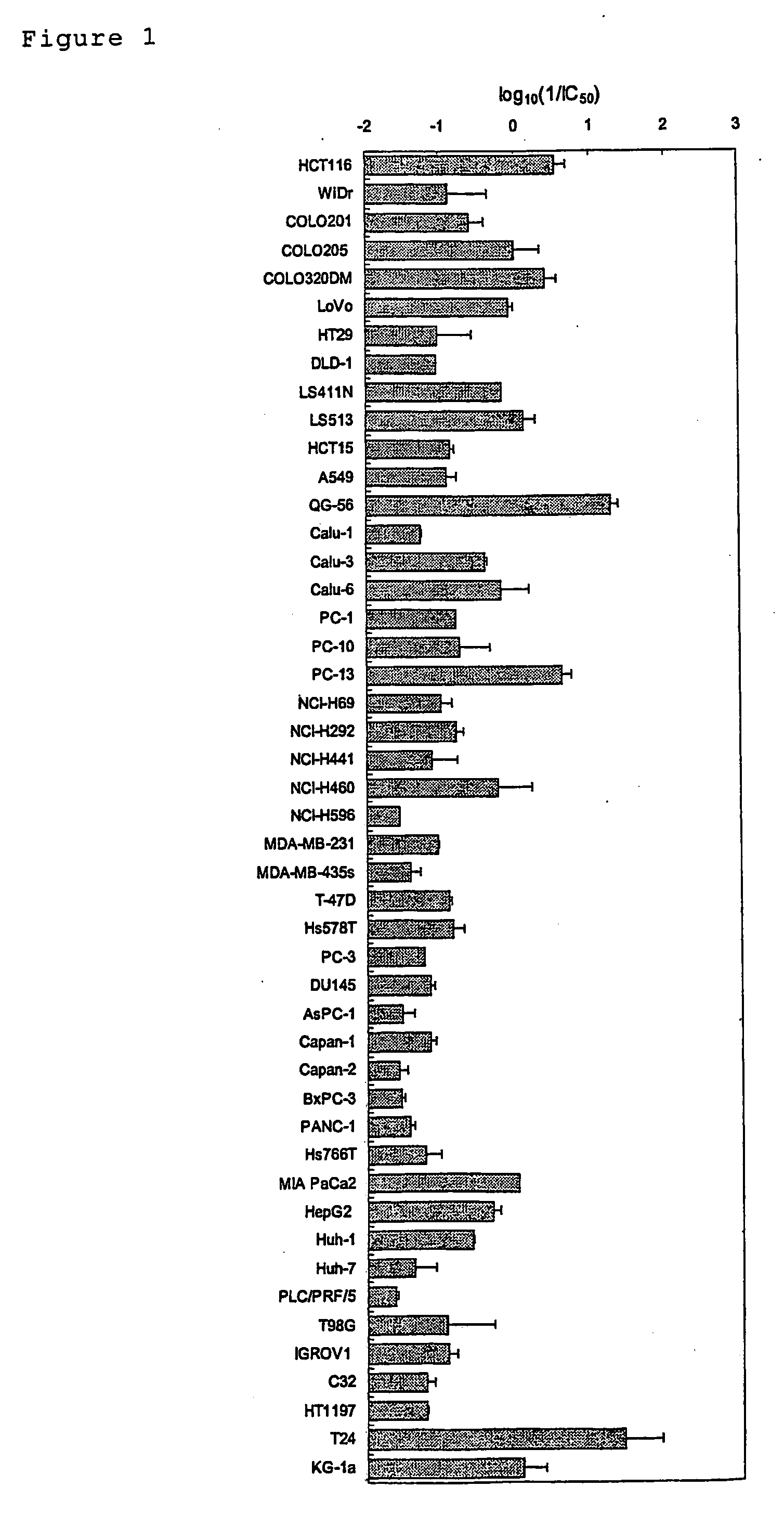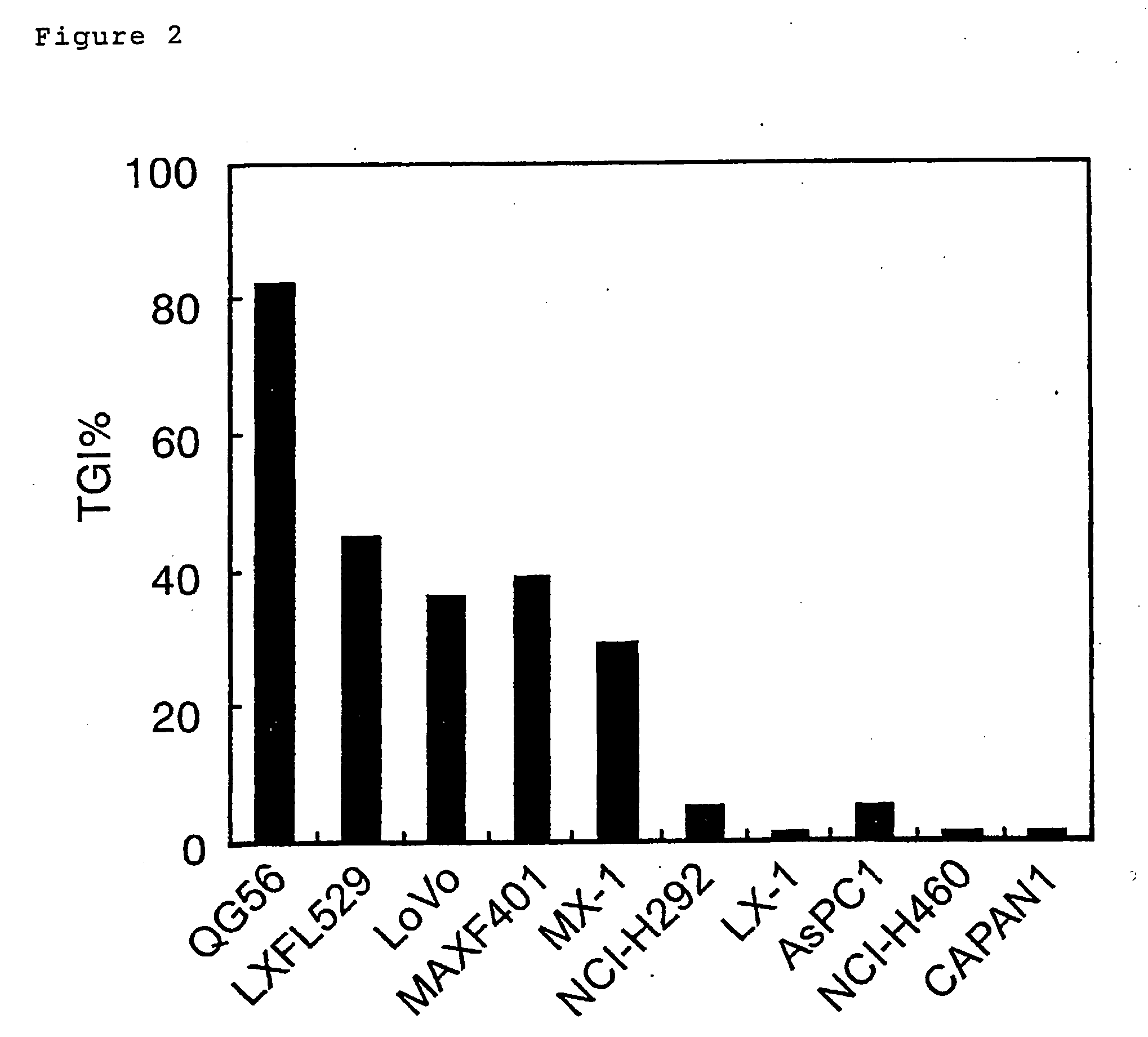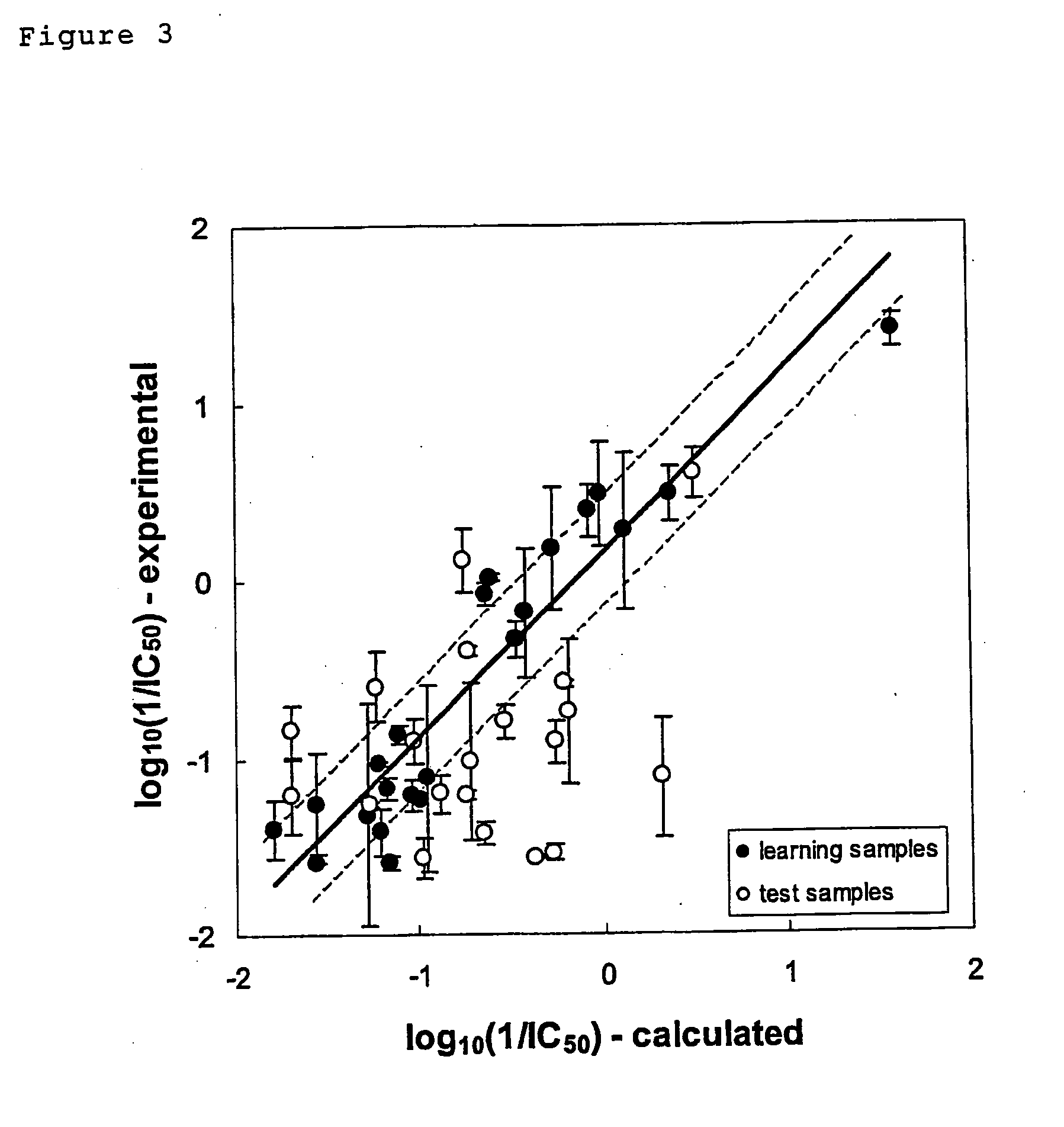Method for selecting drug sensitivity-determining factors and method for predicting drug sensitivity using the selected factors
a drug sensitivity and factor technology, applied in the field of selecting drug sensitivitydetermining factors and predicting drug sensitivity using selected factors, can solve the problem that the method has not yet been developed
- Summary
- Abstract
- Description
- Claims
- Application Information
AI Technical Summary
Benefits of technology
Problems solved by technology
Method used
Image
Examples
example 1
Analysis and Prediction of the Antitumor Effect In Vitro or in the Xenograft Model for 4-[Hydroxy-(3-methyl-3H-imidazol-4-yl)-(5-nitro-7-phenyl-benzofuran-2-yl)-methyl]benzonitrile Hydrochloride
[0193] The in vitro drug sensitivity test was carried out with a cell proliferation assay in a micro-titer plate using the MST-8 colorimetric method. The human cancer cells used were HCT116, WiDr, COLO201, COLO205, COLO320DM, LoVo, HT29, DLD-1, LS411N, LS513, and HCT15 (all of the above are colon cancer cell lines); A549, QG56, Calu-1, Calu-3, Calu-6, PC1, PC10, PC13, NCI-H292, NCI-H441, NCI-H460, NCI-H596, and NCI-H69 (all of the above are lung cancer cell lines); MDA-MB-231, MDA-MB-435S, T-47D, and Hs578T (all of the above are breast cancer cell lines); PC-3, and DU145 (all of the above are prostate cancer cell lines); AsPC-1, Capan-1, Capan-2, BxPC3, PANC-1, Hs766T, and MIAPaCa2 (all of the above are pancreatic cancer cell lines); HepG2, Huh1, Huh7, and PLC / PRF / 5 (a...
example 2
Analysis and Prediction of the Antitumor Effect for Xeloda® in the Xenograft Model for Sensitivity-Unknown Cell Lines (Categorization Model)
[0203] The antitumor effect of Xeloda® (capecitabine) in the xenograft model was assayed using 26 cell lines: DLD-1, LoVo, SW480, COLO201, WiDr, and CX-1 (all of the above are colon cancer cell lines); QG56, Calu-1, NCI-H441, and NCI-H596 (all of the above are lung cancer cell lines); MDA-MB-231, MAXF401, MCF7, ZR-75-1 (all of the above are breast cancer cell lines), AsPC-1, BxPC-3, PANC-1, and Capan-1 (all of the above are pancreatic cancer cell lines); MKN28 and GXF97 (all of the above are gastric cancer cell lines); SK-OV-3 and Nakajima (all of the above are ovarian cancer cell lines); Scaber and T-24 (bladder cancer cell line); Yumoto (uterine cancer cell line); and ME-180 (endometrial cancer cell line). The therapeutic experiment was carried out as follows. For example, in the case of LoVo (colon cancer cell line), 5...
PUM
| Property | Measurement | Unit |
|---|---|---|
| volume | aaaaa | aaaaa |
| modeling power value | aaaaa | aaaaa |
| density | aaaaa | aaaaa |
Abstract
Description
Claims
Application Information
 Login to View More
Login to View More - R&D
- Intellectual Property
- Life Sciences
- Materials
- Tech Scout
- Unparalleled Data Quality
- Higher Quality Content
- 60% Fewer Hallucinations
Browse by: Latest US Patents, China's latest patents, Technical Efficacy Thesaurus, Application Domain, Technology Topic, Popular Technical Reports.
© 2025 PatSnap. All rights reserved.Legal|Privacy policy|Modern Slavery Act Transparency Statement|Sitemap|About US| Contact US: help@patsnap.com



